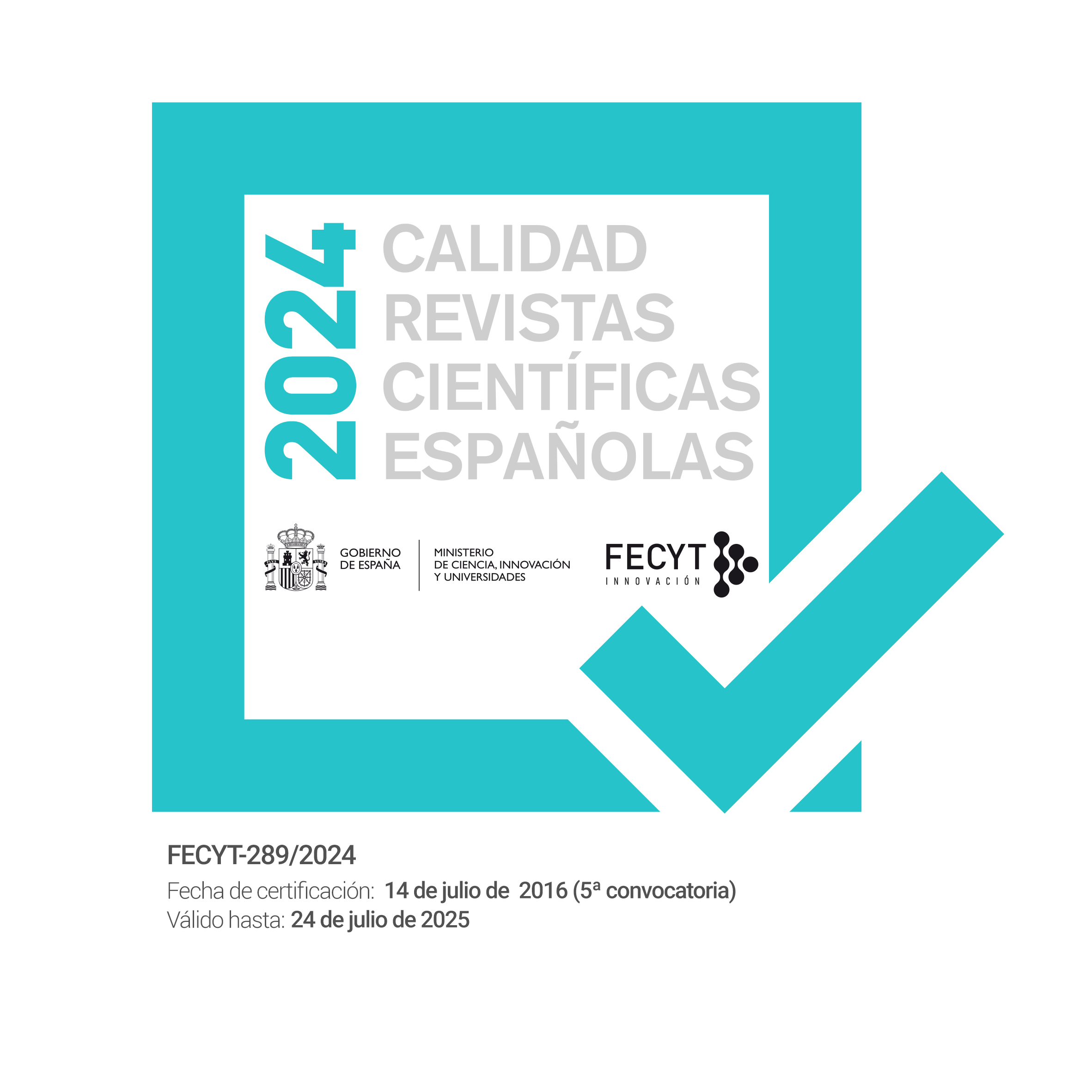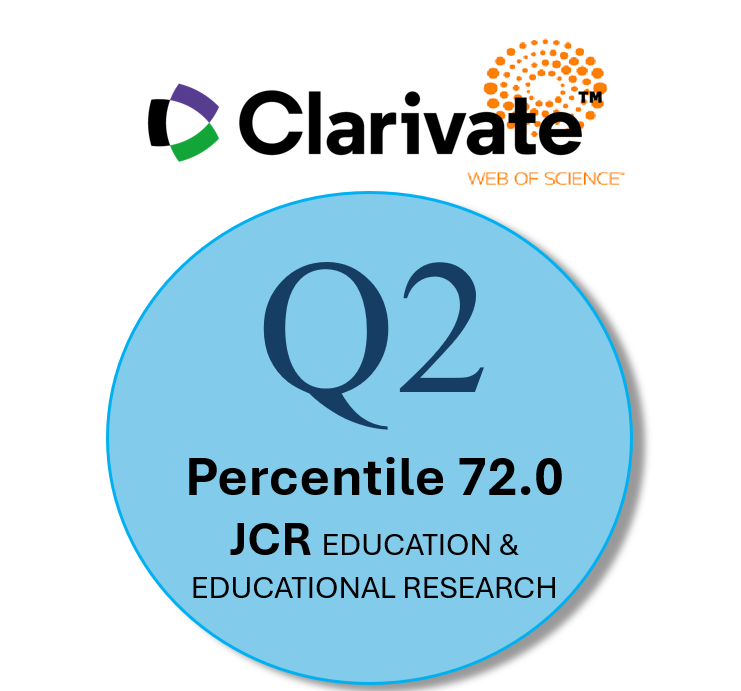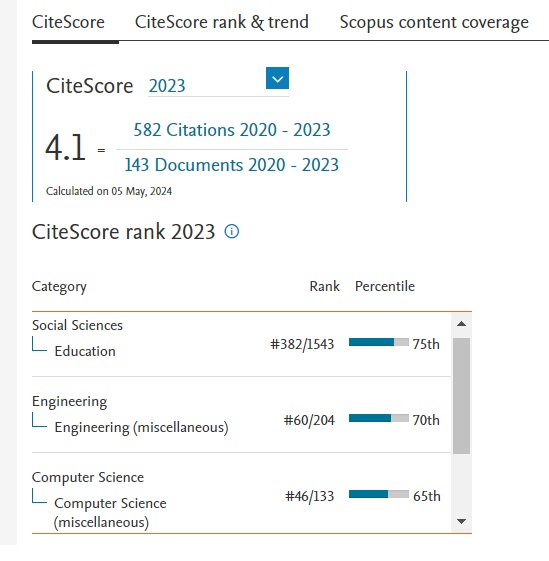¿LongForm o Microcontenido? análisis de soportes para materiales didácticos digitales
Resumen
Este artículo compara el formato de Microcontenido (MC), de unidades de información, pequeñas y fragmentadas, con el formato LongForm (LF) con contenido profundo y extenso, como soporte para materiales didácticos para cursos presenciales o no. El objetivo es encontrar alternativas que no simplifiquen el contenido o generen daños al proceso educativo. Se aplicó una actividad en ambos formatos a 67 estudiantes de una Universidad de Minas Gerais, que reveló las preferencias de los participantes: el MC demostró ser bueno para la construcción de materiales didácticos de menor tamaño y baja densidad de contenido. El formato LF es apropiado para contenido complejo. Éste se presenta como una alternativa viable para cursos en línea ya que está constituido por un único espacio virtual donde se pueden introducir textos más grandes y diversos recursos multimedia para facilitar la comprensión y enriquecer el contenido. Por otro lado, el formato MC está indicado para situaciones que ofrecen materiales didácticos en línea para hacer revisiones, presentación inicial y temas poco densos en extensión y en profundidad conceptual.
Descargas
Citas
Amante, L. & Morgado L. (2001) Metodologia de concepção e desenvolvimento de aplicações educativas: o caso dos materiais hipermedia. Discursos: língua, cultura e sociedade, 27-43. Retrieved from: http://hdl.handle.net/10400.2/4348.
Bardin, L. (2010). Análise de conteúdo. (L. A. Reto & A. Pinheiro, Trad.). Lisboa: Edições 70.
Buchem, I., & Hamelmann, H. (2010). Microlearning: a strategy for ongoing professional development. eLearning Papers, 21(7), 1-15. Retrieved from: http://dx.doi.org/10.4236/ce.2015.623254.
Carvalho, D.R., & Lima, V.A. (2016). A utilização de elementos multimídia no jornalismo digital: um raio-x do especial “Crime sem castigo - tudo sobre o contrabando no Brasil” da Folha de São Paulo. Temática, 12(11). Retrieved from: http://dspace.bc.uepb.edu.br/jspui/bitstream/123456789/10405/1/PDF%20-%20Deise%20Ribeiro%20Carvalho.pdf.
Chartier, R. (1999). A aventura do livro: do leitor ao navegador. Trad. Reginaldo de Moraes. Editora Unesp/Imprensa Oficial do Estado, SP.
Eisenkraemer, R. E. (2006). Leitura digital e linguagem cifrada dos internautas. Texto Digital, 2(2). Retrieved from: https://doi.org/10.5007/%25x.
Gabrielli, S., Kimani, S. & Catarci, T. (2017). The Design of MicroLearning Experiences: A Research Agenda (On Microlearning). Retrieved from: https://goo.gl/mB2GdY.
Hug, T. (2005). Microlearning: a new pedagogical challenge (introductory note). na. Retrieved from: https://www.researchgate.net/profile/Theo_Hug/publication/237397162_Microlearning_A_New_Pedagogical_Challenge_Introductory_Note/links/54009baf0cf23d9765a3f648.pdf.
Leão, L. (2005). O labirinto da hipermídia: a arquitetura e informação no ciberespaço.
Lenzi, A. (2016). Multimidialização como valor-notícia de construção: a experiência do UOL TAB. Revista Latino-americana de Jornalismo. Retrieved from: http://periodicos.ufpb.br/index.php/ancora/article/view/28305.
Longhi, R. R., & Flores, A. M. M. (2017). Narrativas del periodismo digital como un elemento de innovación: casos de AlJazeera, Folha de S. Paulo, The Guardian, The New York Times y The WashingtonPost. Intercom: Revista Brasileira de Ciências da Comunicação, 40(1), 21-40. Retrieved from: http://dx.doi.org/10.1590/1809-5844201712.
Longhi, R. R., & Winques, K. (2015). O lugar do longform no jornalismo online. Qualidade versus quantidade e algumas considerações sobre o consumo. Brazilian Journalism Research, 11(1), 110-127. Retrieved from: https://doi.org/10.25200/BJR.v11n1.2015.693.
Marchuschi, L. A. (2007) A coerência no hipertexto. In.: Carla; C. & Ana Elisa R. (Eds.). Letramento digital: aspectos sociais e possibilidades pedagógicas. 2ª. Ed. Belo Horizonte: Ceale-Autêntica.
Moore, M. G., & Anderson, W. G. (Eds.). (2007). Handbook of distance education. L. Erlbaum Associates.
Nielsen, J. & Loranger, Hoa. (1998) Microcontent: a few small words have a mega impact on business. Retrieved from: https://www.nngroup.com/articles/microcontent-how-to-write-headlines-page-titles-and-subject-lines/.
Salaverría, R. (2014). Multimedialidade: informar para cinco sentidos. In: Canavilhas, J. (Org.). Webjornalismo: 7 caraterísticas que marcam a diferença. Retrieved from: http://www.labcom-ifp.ubi.pt/ficheiros/20141204-201404_webjornalismo_jcanavilhas.pdf.
Santaella, L. (2007). Linguagens líquidas na era da mobilidade. São Paulo:Paulus.
Santaella, L. (2004). Navegar no ciberespaço: o perfil cognitivo do leitor imersivo. São Paulo:Paulus.
Silva, M. D., Vieira, M. L. H., Pereira, A. T. C., & Braviano, G. Microconteúdos na forma de explainer videos para a educação. Uma revisão integrativa. Retrieved from: https://www.researchgate.net/publication/297918827_MICROCONTEUDOS_NA_FORMA_DE_EXPLAINER_VIDEOS_PARA_A_EDUCACAO_UMA_REVISAO_INTEGRATIVA.
Willey, D. A. (2002) Connecting learning objects to instructional design theory: A definition, a metaphor, and a taxionomy. Retrieved from: http://reusability.org/read/chapters/wiley.doc
- 08-01-2021 (3)
- 09-11-2020 (2)
- 08-11-2020 (1)
Derechos de autor 2020 Revista de Educación a Distancia (RED)

Esta obra está bajo una licencia internacional Creative Commons Atribución-NoComercial 4.0.
Las obras que se publican en esta revista están sujetas a los siguientes términos:
1. El Servicio de Publicaciones de la Universidad de Murcia (la editorial) conserva los derechos patrimoniales (copyright) de las obras publicadas, y favorece y permite la reutilización de las mismas bajo la licencia de uso indicada en el punto 2.
2. Las obras se publican en la edición electrónica de la revista bajo una licencia Creative Commons Reconocimiento-NoComercial-SinObraDerivada 3.0 España (texto legal). Se pueden copiar, usar, difundir, transmitir y exponer públicamente, siempre que: i) se cite la autoría y la fuente original de su publicación (revista, editorial y URL de la obra); ii) no se usen para fines comerciales; iii) se mencione la existencia y especificaciones de esta licencia de uso.
3. Condiciones de auto-archivo. Se permite y se anima a los autores a difundir electrónicamente las versiones pre-print (versión antes de ser evaluada) y/o post-print (versión evaluada y aceptada para su publicación) de sus obras antes de su publicación, ya que favorece su circulación y difusión más temprana y con ello un posible aumento en su citación y alcance entre la comunidad académica. Color RoMEO: verde.















